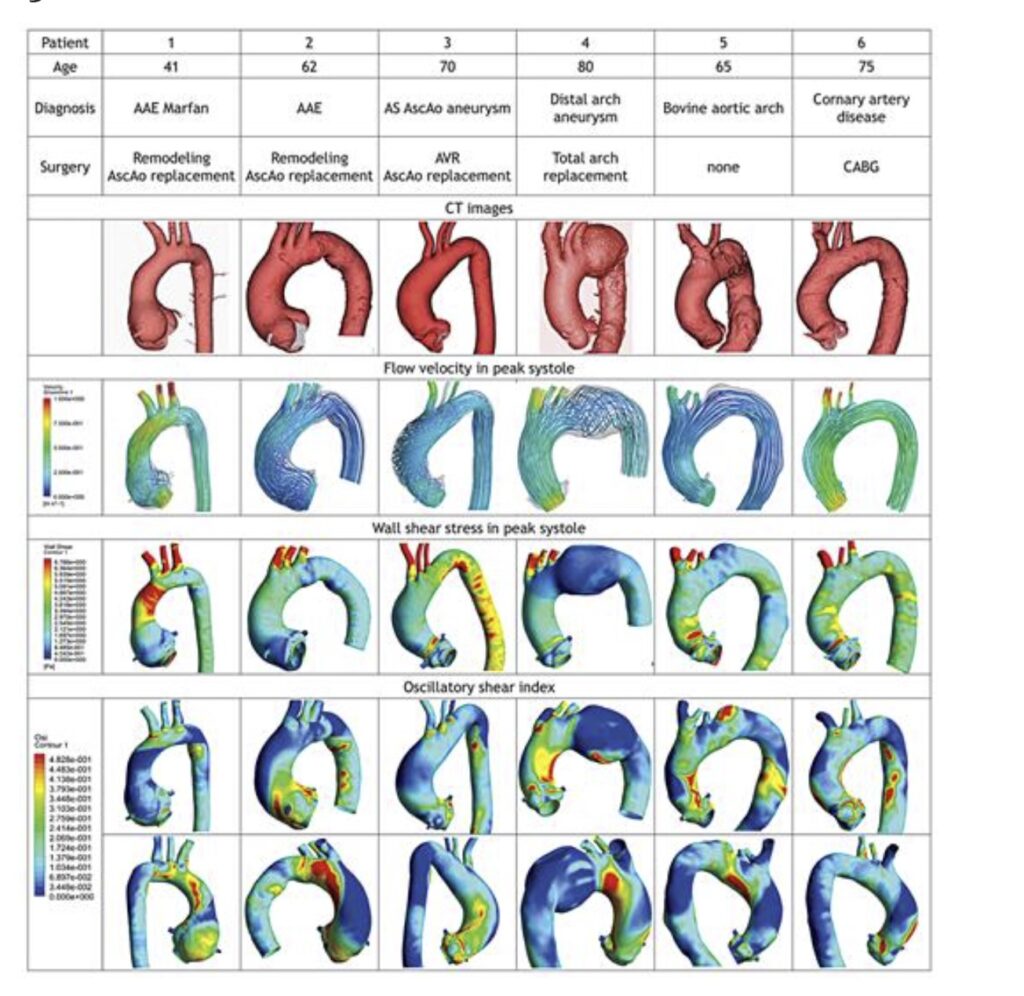Blood flow analysis of the aortic arch using computational fluid dynamics
It is obvious that haemodynamic parameters, such as blood flow velocity, blood pressure and wall shear stress (WSS), are closely related with the pathophysiology of aortic diseases.
To obtain predictive information regarding aortic disease, they evaluated how blood flow inside the aortic arch was influenced by thoracic aortic aneurysms.
As result, A dilated aorta causes a turbulent flow pattern in the aortic arch.
The high OSI site was similar to the favourite entry site for acute aortic dissection, indicating the causal relationship between mechanical stress and acute aortic dissection.
Reference
Satoshi Numata, Keiichi Itatani, Keiichi Kanda, Kiyoshi Doi, Sachiko Yamazaki, Kazuki Morimoto, Kaichiro Manabe, Koki Ikemoto, Hitoshi Yaku , "Blood flow analysis of the aortic arch using computational fluid dynamics", European Journal of Cardio-Thoracic Surgery, 49 (2016) 1578–1585.
Go To the Journal Page
